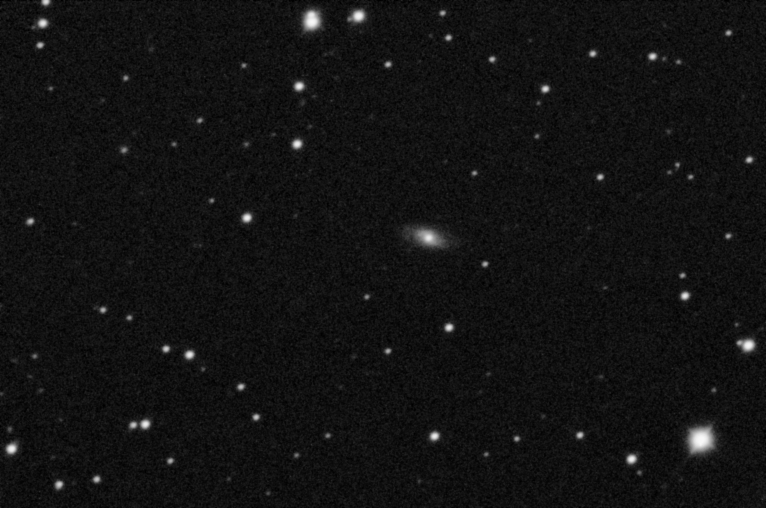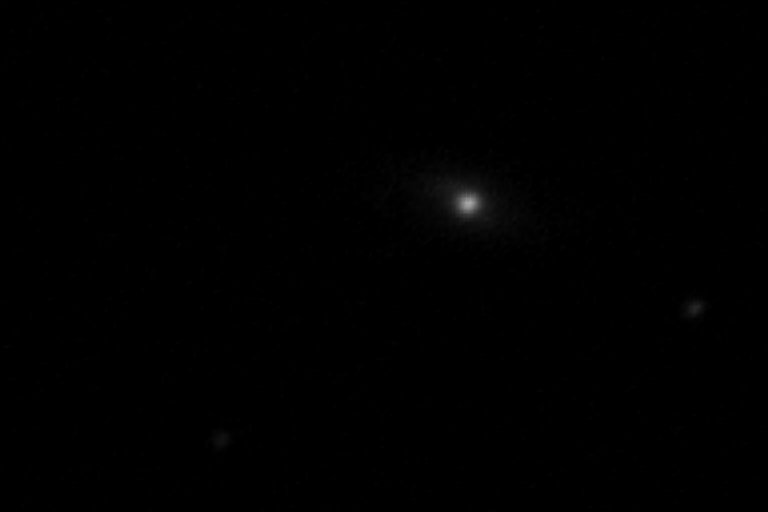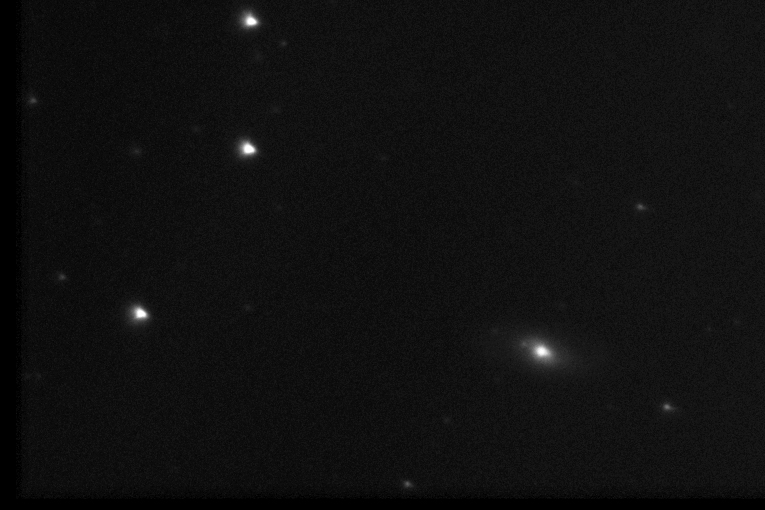
Combination of 2, 3 minute images, Meade 416XTE CCD.
300mm f/6 newtonian telescope at prime focus. In this image, the galaxy is clearly visible, but the quasar is not.

QSO 2237+030 is an interesting quasar in Pegasus. At magnitude 16.5, it would normally require at least an 18" telescope to observe visually. However this quasar is not alone. Rather it is situated behind the 15th magnitude galaxy, PGC 69457. The galaxy is much closer to the Earth than the quasar and the gravity of the galaxy acts as a lens, distorting the light from the galaxy. As a result, 4 images of the quasar are formed and visible in large telescopes. The question is, how small a telescope are the 4 images visible in? The brightness is not the problem, rather it is a question of resolution.
The image below is an enlarged view of the above photograph, and shows the nucleus of the galaxy, which has been processed to enhance contrast. In this view, the 4 images of the quasar are just becomming visible. This indicates that the 4 images are just at the limit of resolution of the 300mm telescope.

